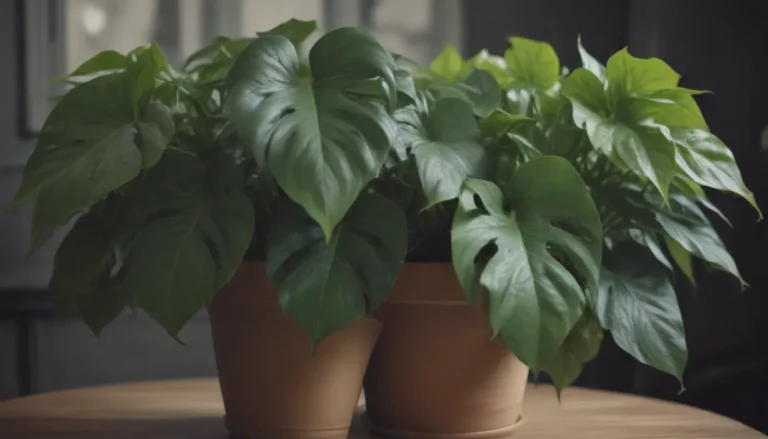Everything You Need to Know About Growing and Caring for Weeping Willow Trees

Weeping willow trees are a sight to behold, with their graceful arching stems and delicate leaves that dance in the breeze. If you’re thinking about planting a weeping willow in your yard, there are a few key things you need to know to ensure its health and success. In this comprehensive guide, we’ll cover everything from the best growing conditions to common pests and diseases, so you can enjoy the beauty of a weeping willow in your own backyard.
What Makes Weeping Willow Trees Unique
The weeping willow tree, also known as Salix babylonica, is one of the most recognizable members of the willow family. Here are some key features that make this tree stand out:
- Lance-shaped leaves that turn yellow in the fall
- Rough, gray-colored bark
- Gracefully arching stems that sway in the wind
- Fast-growing nature, adding up to 10 feet per year when young
Weeping willows thrive in moist climates with full sun exposure, acidic to alkaline soil, and temperatures between minus 20 degrees and 80 degrees. In late winter or spring, the tree produces yellow catkins, adding a touch of color to your landscape.
Weeping Willow Care Tips
Warning: Avoid Planting Near Sewer Drains and Water Lines
Weeping willows have aggressive root systems that can extend farther than the tree is tall. Avoid planting them near sewer drains, septic systems, or water lines to prevent damage to these structures.
Light: Provide Full Sun Exposure
Weeping willows thrive in full sun in colder regions, while partial shade is suitable in warmer climates. Make sure the tree receives at least four hours of direct sunlight each day to promote healthy growth.
Soil: Choose Well-Draining Soil
Weeping willows can tolerate a variety of soil types, including alkaline, loamy, rich, sandy, and clay soils. Keep the soil slightly acidic and well-draining to prevent waterlogged conditions.
Water: Keep the Soil Moist
Weeping willows love standing water and are perfect for areas prone to flooding or near ponds, streams, and lakes. Ensure the soil remains moist, especially during dry periods, to support the tree’s growth.
Temperature and Humidity: Drought Tolerant Yet Cold Hardy
Weeping willows can withstand drought and winter cold, as long as they have access to water and greenery nearby. They can also tolerate summer heat, provided they have sufficient water.
Fertilizer: Minimal Fertilization Required
Healthy weeping willows planted in nutrient-rich soil may not need additional fertilizer. However, you can apply fertilizer to promote lush growth, especially in younger trees.
Pruning: Maintain a Single Leader
Prune young weeping willows to have a single central leader and wide branch crotches to prevent breakage. Pruning in February or March stimulates new growth and strengthens the tree.
Types of Weeping Willows
There are several popular varieties of weeping willow trees, each with its unique characteristics. Some noteworthy varieties include:
- Golden weeping willow (Salix alba ‘Tristis’)
- Wisconsin weeping willow (Salix pendulina)
- Thurlow weeping willow (Salix pendulina ‘Elegantissima’)
These varieties offer different appearances and growth habits, allowing you to choose the perfect weeping willow for your landscape.
Propagating Weeping Willows
You can propagate weeping willows using hardwood cuttings in the fall or winter. This method allows for the development of new trees with established root systems before the onset of hot temperatures in late spring.
Common Pests and Plant Diseases
Weeping willows are susceptible to various pests and diseases, including gypsy moths, aphids, borers, and fungal infections. To protect your tree, consider targeted spraying with pesticides and use collars to deter wildlife from damaging young trees.
Symptoms of diseases like willow scab, crown gall, and leaf spot may include branch dieback and defoliation. Proper watering, removal of leaf litter, and fungicide applications can help prevent and treat these issues.
Enhancing Blooms on Weeping Willow Trees
Bloom Months and Duration
Weeping willow trees typically bloom in the spring, with vibrant yellow catkins hanging from the branches. Blooms can last for a few weeks, creating a beautiful display in your garden.
Post-Bloom Care
After blooming, weeping willows do not require additional care, although you may need to clean up fallen leaves and flowers. Regular maintenance, such as mowing grass below the tree, can help keep your landscape tidy.
Troubleshooting Common Problems
Weeping willows are generally easy to care for but can experience issues like yellowing or crispy leaves due to water and sunlight exposure. Proper drainage and watering schedules are essential to maintain a healthy tree.
Remember that weeping willows have aggressive root systems that seek out water sources, potentially causing damage to nearby structures. Planting them in suitable locations away from sewer drains and water lines can prevent root invasion.
In conclusion, weeping willow trees are stunning additions to any landscape, providing beauty and shade with their unique growth habit and foliage. By following the care tips outlined in this guide and addressing common issues promptly, you can enjoy the beauty of a weeping willow in your own backyard for years to come.





